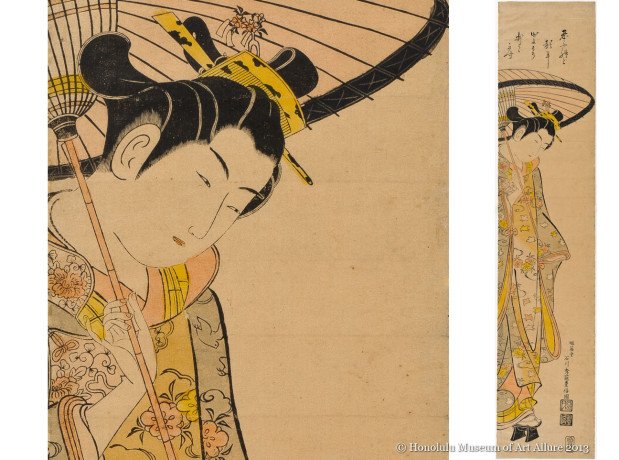Ishikawa Toyonobu (1711-1785)
Woman Holding Umbrella
Japan, Edo period, c. 1750
Woodblock print; ink and color on paper
Gift of James A. Michener, 1991
Honolulu Museum of Art
(23308)
She hid her love
But it showed on her face
When she heard the cuckoo.
Toyonobu flourished before the development of “brocade” or multi-color printing (nishiki-e), and consequently his prints are usually either benizuri-e (literally “pink-printed pictures”), which utilized a limited palette of two colors, or printed in monochrome with hand-coloring. By the time nishiki-e developed in the 1760s, Toyonobu had inherited an inn from his father-in-law, and was no longer active as a designer.
While idealized beauties in the early 18th century tended to be depicted with a stately, imposing presence (see the print by Kaigetsudō Dohan elsewhere in this exhibition), by Toyonobu’s time, more youthful, willowy figures had become fashionable, setting the stage for Harunobu a little more than a decade later. The woman’s coyness is conveyed by the fact that she is fully covered by a raincoat, and further hidden by an umbrella, but as the poem indicates, far from a genuine expression of modesty, this only serves to add an undertone of eroticism to her portrayal.
View info on museum database (enabled through support by the Robert F. Lange Foundation)


